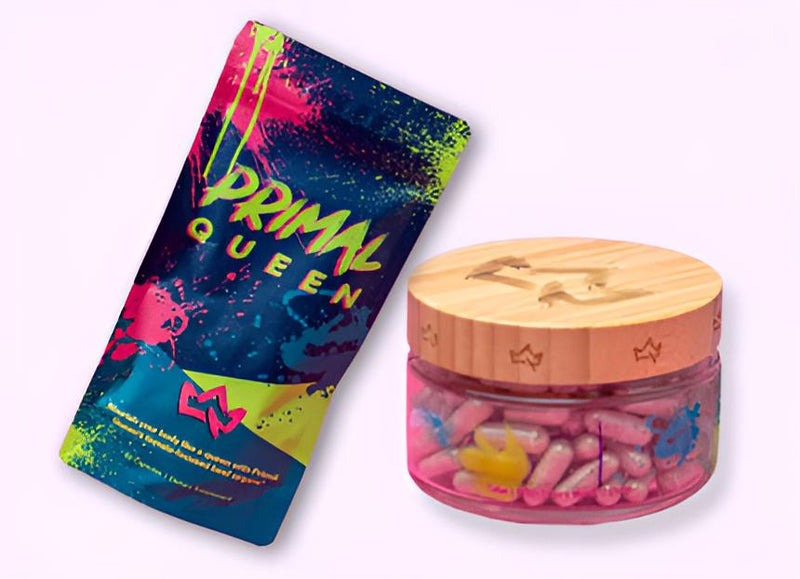Whether you're a seasoned athlete or a weekend warrior, the right sports apparel can make all the difference in your performance, comfort, and overall experience. From running shoes to moisture-wicking shirts, choosing the right gear ensures that you stay focused on your workout without being distracted by discomfort. Sports apparel has evolved significantly in recent years, with new fabrics, designs, and technologies that combine style, comfort, and performance. In this guide, we’ll explore the essential types of sports apparel, key considerations for comfort and performance, and the latest innovations to look out for in 2025.
Why the Right Sports Apparel Matters
Comfort During Exercise
Comfort is one of the most important factors when choosing sports apparel. Ill-fitting clothes can lead to chafing, discomfort, and even distraction, which can interfere with your workout or performance in sports. Apparel that is too tight, too loose, or made from uncomfortable materials can cause irritation, restrict movement, or leave you feeling overheated or cold.
Performance Enhancement
In addition to comfort, performance is another critical factor in sports apparel. The right gear can help enhance your athletic performance by providing flexibility, support, and protection. For example, compression wear can boost circulation and reduce muscle fatigue, while moisture-wicking fabrics can help regulate your body temperature and keep you dry during intense workouts.
Injury Prevention
Proper sports apparel also plays a role in injury prevention. For instance, supportive footwear can prevent joint strain, while clothing designed to support muscles can reduce the risk of strains or sprains. Additionally, gear like compression socks and knee sleeves can offer support to joints during high-impact activities, promoting long-term injury prevention.
Essential Sports Apparel for Every Athlete
1. Athletic Shoes: The Foundation of Comfort and Performance
Shoes are arguably the most important piece of sports apparel. Whether you're running, cycling, playing basketball, or lifting weights, the right pair of shoes can have a significant impact on your performance, comfort, and injury prevention.
Key Considerations for Athletic Shoes:
Fit: Shoes should fit snugly but not be tight. Consider factors like arch type (flat, neutral, or high arch) and foot width to ensure the best fit.
Purpose: Different sports require different types of shoes. Running shoes offer cushioning and support for forward motion, while basketball shoes provide ankle support for lateral movements. Cross-training shoes are versatile and designed for various workouts.
Cushioning and Stability: Shoes with good cushioning help absorb shock and reduce impact stress on joints, while stability features prevent excessive movement of the foot during physical activity.
Popular Types of Athletic Shoes:
Running Shoes: Lightweight and cushioned to absorb the impact of running on hard surfaces.
Training Shoes: Versatile footwear designed for various exercises, offering a stable base for weightlifting and agility exercises.
Basketball Shoes: High-top designs that support the ankle, ideal for the lateral movement and quick stops common in basketball.
2. Moisture-Wicking Apparel: Stay Dry and Comfortable
Moisture-wicking fabrics are a must-have in sports apparel, as they keep you dry by drawing sweat away from the skin. This is essential for maintaining comfort during exercise and preventing irritation, chafing, and the uncomfortable feeling of sweat-soaked clothing.
How Moisture-Wicking Fabrics Work:
Moisture-wicking fabrics are typically made from synthetic materials like polyester, nylon, and spandex, which are designed to pull moisture away from the skin and move it to the surface of the fabric, where it can evaporate. This helps regulate body temperature and keeps the body cool during intense physical activity.
Recommended Moisture-Wicking Apparel:
T-Shirts and Tank Tops: Lightweight and breathable, these tops are designed to wick moisture away from your body during cardio, running, or weightlifting.
Compression Tops and Shorts: These garments not only wick moisture but also provide muscle support and increase blood flow, which can enhance athletic performance and recovery.
Athletic Socks: Specialized socks made from moisture-wicking materials reduce sweat and help prevent blisters during high-intensity activities.
3. Compression Wear: Boost Performance and Recovery
Compression gear has become a favorite among athletes due to its ability to enhance performance, reduce muscle fatigue, and speed up recovery. Compression garments apply pressure to specific muscles or joints, which improves circulation and decreases muscle vibration during activity.
Benefits of Compression Gear:
Increased Blood Flow: Compression wear helps increase blood circulation, which can deliver more oxygen to muscles and reduce lactic acid buildup, improving performance.
Reduced Muscle Fatigue: The gentle pressure from compression gear can reduce muscle oscillation (the vibration of muscles during movement), leading to less fatigue during and after exercise.
Faster Recovery: By improving circulation and reducing inflammation, compression garments can speed up recovery time, helping athletes get back to training faster.
Popular Compression Gear:
Compression Socks: These help increase circulation in the lower legs, making them popular among runners, cyclists, and people recovering from long periods of physical activity.
Compression Sleeves: Arm or calf sleeves can be worn during exercise to reduce muscle soreness and improve endurance.
Compression Shorts: Designed to provide support to the thighs and glutes, these shorts are especially useful for activities like running and weightlifting.
4. Sports Bras: Support and Comfort for Women Athletes
A well-fitting sports bra is essential for comfort, support, and injury prevention in female athletes. During physical activity, breasts move in multiple directions, and without proper support, this can lead to discomfort, pain, or even long-term damage to connective tissue.
Key Features of a Good Sports Bra:
Support: Sports bras provide varying levels of support based on the intensity of the activity. High-impact sports like running or basketball require bras with strong support, while low-impact activities may only require light support.
Breathability: Sports bras should be made from breathable, moisture-wicking materials to keep you dry and comfortable during intense exercise.
Fit: A sports bra should fit snugly without being too tight. Look for adjustable straps and closures to ensure a customized fit.
Popular Types of Sports Bras:
High-Impact Sports Bras: Designed for high-intensity workouts, such as running, aerobics, or CrossFit.
Medium-Impact Sports Bras: Ideal for activities like cycling or hiking, where you still need support but not as much as with high-impact sports.
Low-Impact Sports Bras: Best for yoga, Pilates, or casual workouts, where minimal support is required.
5. Jackets and Outerwear: Layering for Weather Conditions
Athletes who train outdoors need weather-resistant gear to stay comfortable and perform well in various conditions. Jackets, vests, and outer layers provide protection from the elements, ensuring you stay warm, dry, or cool depending on the climate.
Key Features to Look For in Outdoor Sportswear:
Water Resistance: For rainy or wet conditions, look for jackets made from water-resistant or waterproof fabrics.
Breathability: A breathable jacket allows moisture from sweat to escape while keeping the cold or heat from penetrating.
Wind Resistance: Windproof jackets are essential for outdoor sports in colder months to protect against wind chill.
Recommended Outdoor Sportswear:
Running Jackets: Lightweight and designed to protect against wind and light rain, these jackets are perfect for outdoor runners.
Cold-Weather Gear: Insulated jackets and vests keep you warm during outdoor winter activities like hiking, skiing, or snowshoeing.
Lightweight Windbreakers: Ideal for cyclists, hikers, and runners who want a lightweight layer that blocks the wind without adding bulk.
Innovations in Sports Apparel: What’s New in 2025?
Smart Fabrics and Wearables
In recent years, the integration of technology into sports apparel has made significant strides. Smart fabrics and wearables are now capable of monitoring your heart rate, body temperature, and even muscle activation in real-time. These innovations can provide valuable insights into performance and recovery, helping athletes optimize their training routines.
Examples of Smart Sports Apparel:
Smart Shirts: Equipped with sensors, these shirts can track your heart rate, breathing rate, and muscle activation during exercise, sending real-time data to your smartphone or wearable device.
Fitness-Tracking Socks: These socks come with built-in sensors that track your step count, gait, and pressure distribution, providing valuable data for runners and walkers.
Performance-Enhancing Wearables: Wearable devices like smartwatches or fitness trackers can track your activity levels, monitor your sleep, and help manage your overall health and fitness goals.
Sustainable Sports Apparel
As sustainability becomes a greater concern for consumers and manufacturers alike, eco-friendly sports apparel is on the rise. Many brands are now using recycled materials, organic fabrics, and environmentally-friendly production methods to create performance-enhancing apparel without harming the planet.
Examples of Sustainable Sports Apparel:
Recycled Polyester Activewear: Many athletic brands are using recycled polyester made from plastic bottles to create durable, moisture-wicking workout clothes.
Eco-Friendly Footwear: Some companies now make shoes from sustainable materials like algae foam or recycled rubber, offering a performance product that’s also better for the environment.
Organic Cotton Sportswear: For casual athletes, organic cotton provides a natural, breathable fabric for workout clothes that’s better for the planet.
Find the Right Sports Apparel for You
Choosing the right sports apparel is essential for optimizing performance, enhancing comfort, and preventing injuries. By focusing on the right gear for your sport and activity level, you can enjoy your workouts and sports activities to the fullest. Whether it’s high-performance shoes, moisture-wicking clothing, compression wear, or smart technology, investing in quality apparel ensures that you’ll always be prepared to perform at your best, all while staying comfortable and stylish.




.jpg)